
|
|
 |
| Home | Topics Research | Publications | Collaborations | Contact Us | People | Links |
|
|
Large Objects
Tomographyc System 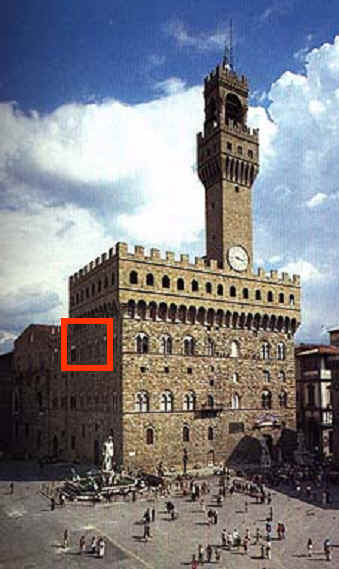 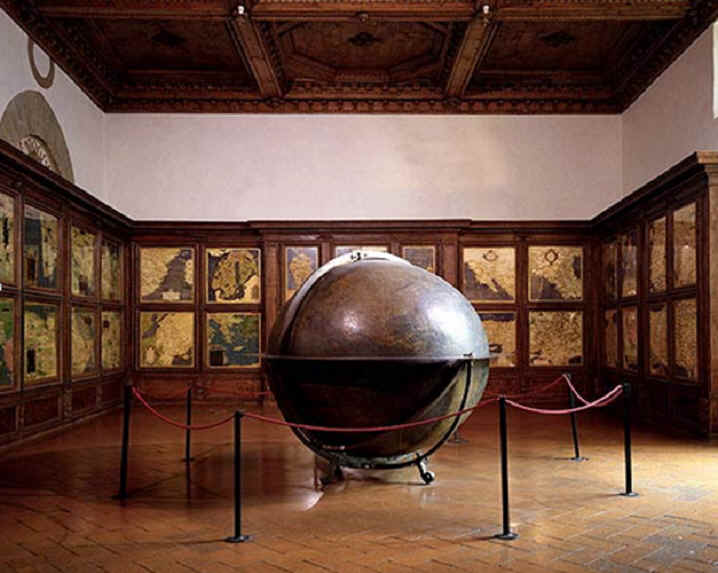 CT analysis of an ancient Globe |
This globe was created by a Dominican monk, Egnazio Danti, around 1567 and is located in Palazzo Vecchio, at Florence.
The CT system used consists of an X-ray tube, mounted on a vertical moving axis, a planar detector made of a GOS scintillating screen and an Electron Bombarded CCD (EBCCD) camera, which can translate both horizontally and vertically, and a rotating platform, on which the globe was placed. A motor moved the X-ray tube along an aluminum column. Two more motors moved the detector along the x and y-axis. The main problem of getting a complete CT is related to the large size of this masterpiece (220 cm in diameter) and the need of achieving an in situ analysis in a museum surrounded by visitors. The dimension of the planar detector used was 30 × 40 cm2, thus requiring the acquisition of about 32,000 images, for covering the entire Field Of View (FOV).
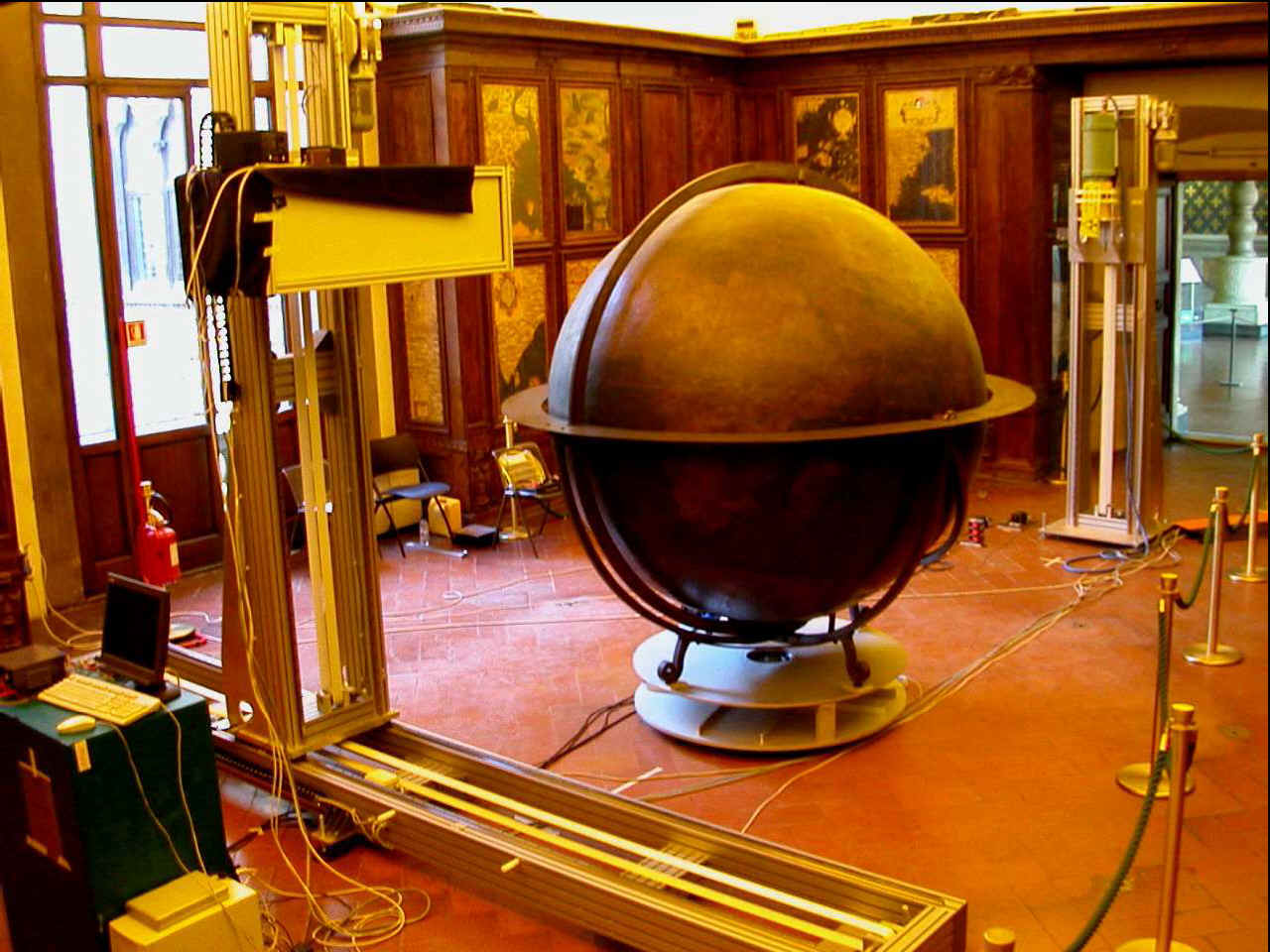
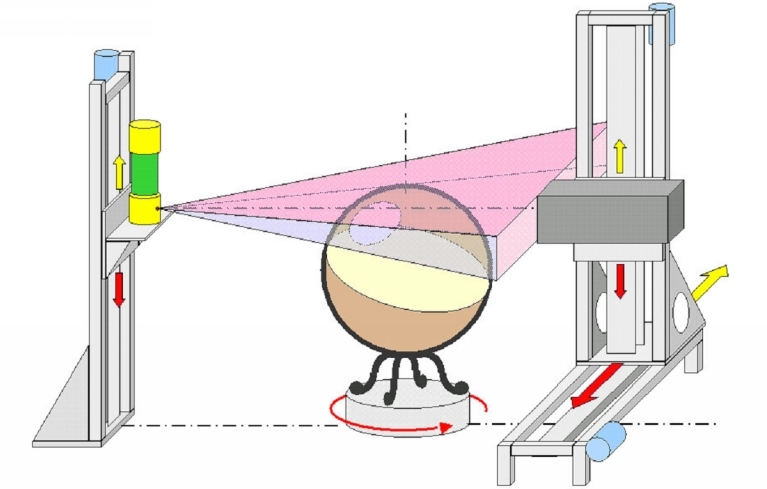
| Main parameters for the CT globe acquisition: Tube voltage: 180 kVp Tube current 2 mA Exposition time: 400 ms × 16 frames Angular step: 1° N° of pixels (single image): 528 × 286 pixels Field of View (single image): 30 cm × 40 cm Globe diameter: 2.20 m Source-to-Globe distance: 3.87 m Globe-to-Detector distance: 1.31 m |
 |
| 3D Animated Reconstruction |
View of the internal structure:
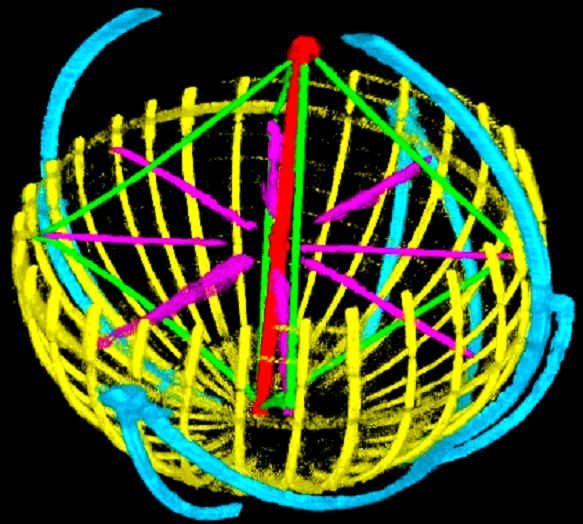
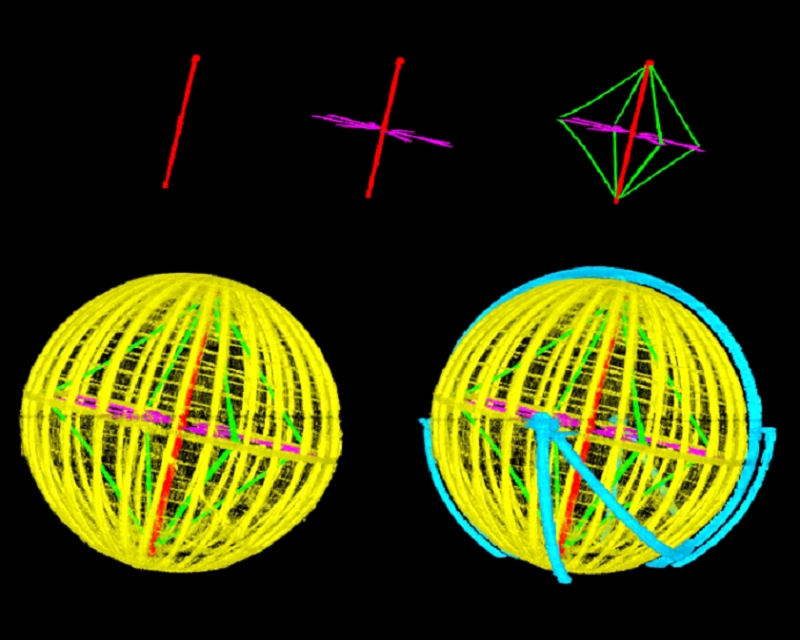
Not all of the meridians converge in the north pole. Some meridians deliberately were left free in order do not to overload the supporting structure:
see figure belowe:
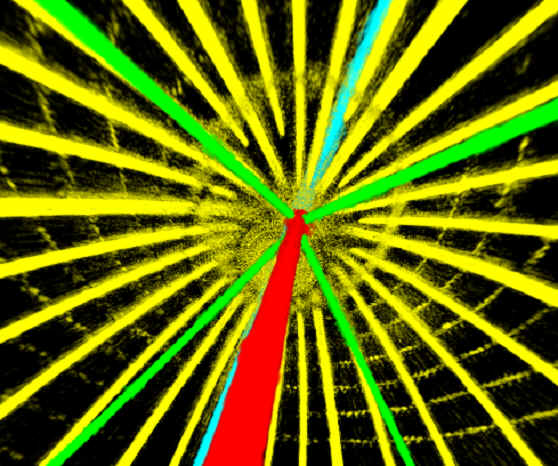
The measurements of all the planar images took about one month, during June 2004. Much of the work has been achieved during the evening hours and during the night, when the tourists were not present inside the museum. It is worth noting that the good spatial resolution of the detector allows to see some holes inside the iron
bars: see figure belowe:

Webmaster: Rosa
Brancaccio